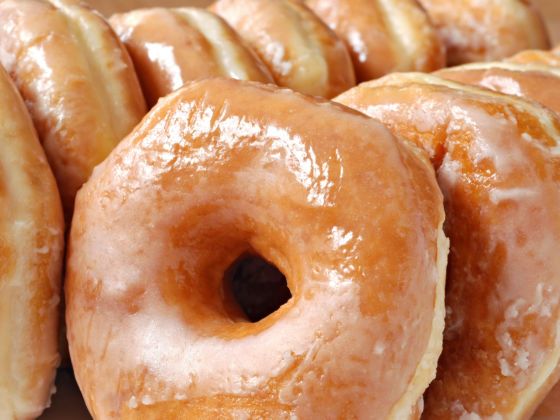June 5 is National Doughnut Day, and for most people that might signal an opportunity to enjoy a doughnut either as a breakfast snack or delectable dessert. A doughnut is usually not the subject of much deep thought beyond the two minutes it takes to eat one. But the history of the doughnut goes much deeper than you might think, and the designated National Doughnut Day is much more than an excuse to buy a dozen doughnuts for your coworkers. In fact, it actually celebrates the women who braved the front lines of the conflict to fry doughnuts for soldiers under the most inhospitable circumstances.


How ‘Doughnut Lassies’ Supported Front-Line Troops During World War I
During World War I, volunteers from the Salvation Army, an all-women group nicknamed the “Doughnut Lassies,” served doughnuts to American Expeditionary Forces serving on the front lines in France, hoping to boost morale and provide a much-needed reminder of home. When it comes to comfort foods, doughnuts have been the MVP since 1914.
According to The National WWI Museum and Memorial in Kansas City, these women served near the front lines and handed out writing supplies, stamps, and hot meals to the soldiers in addition to baking doughnuts. Sometimes they used shell casings to roll out the dough. Because these women risked their lives, National Doughnut Day was established in 1938 to honor their hard work.
“National Doughnut Day isn’t actually a salute to the doughnut but honors the women of The Salvation Army who supported the American Expeditionary Forces during World War I,” explains Lora Vogt, the memorial’s curator of education. “A primary portion of their mission was to help ease the hardships of fighting for US soldiers on the front lines. Needless to say, it is not easy to bake in abandoned buildings and war-torn communities. Two volunteers — Margaret Sheldon and Helen Purviance — saw a need and became innovators as they began frying doughnuts in soldiers’ helmets, up to seven per batch in the beginning.”
Purviance in particular stated that it was her mission to bring a taste of home to soldiers, later stating that “There was… a prayer in my heart that somehow this home touch would do more for those who ate the doughnuts than satisfy a physical hunger.”
According to Vogt, although other baked goods like pies were made, doughnuts were favored because they could be prepared using shelf-stable ingredients and could be fried anywhere that the volunteers could heat oil — no oven needed. The volunteers then served the freshly dried doughnuts to the likely exhausted, homesick soldiers. A doughnut might not heal all their wounds but in times of crisis, a handmade treat can offer a moment of serenity.
The doughnut evolved during this period, too: During the war, many ingredients were rationed on the home front to make sure that enough supplies could be sent to the armed forces. When wheat flour wasn’t available, recipes substituted rye flour, barley flour, and sweet potato flour. Sugar was in short supply too, but corn syrup and molasses came to the rescue. Vogt says that one of the most important lessons to come out of the wartime kitchen is that most recipes are adaptable — including those for doughnuts.
“If short on yeast, consider using sourdough or baking powder as the rising agent,” she adds. “Not so keen on lard? Refined coconut oil is solid at room temperature and has the same shelf-stable qualities.”
If you do plan on enjoying a doughnut on June 5, spare a moment to think about the brave women who upended their lives to provide small but vital comforts to the young who served in France during World War I. Their efforts might seem small, but they understood the power of something as simple as a doughnut to bring joy.